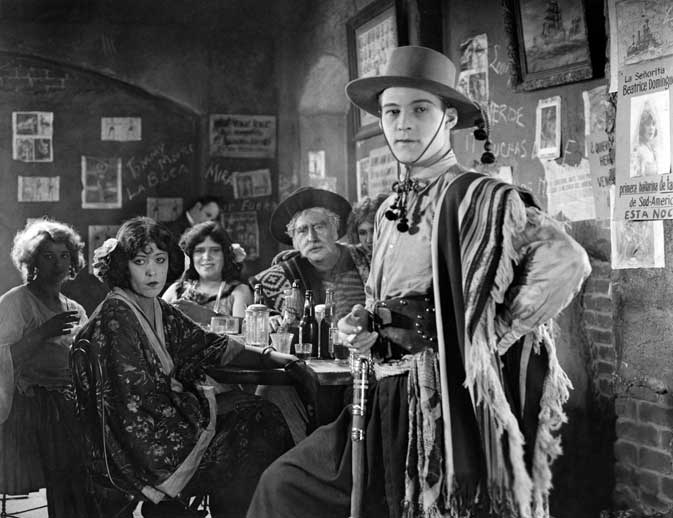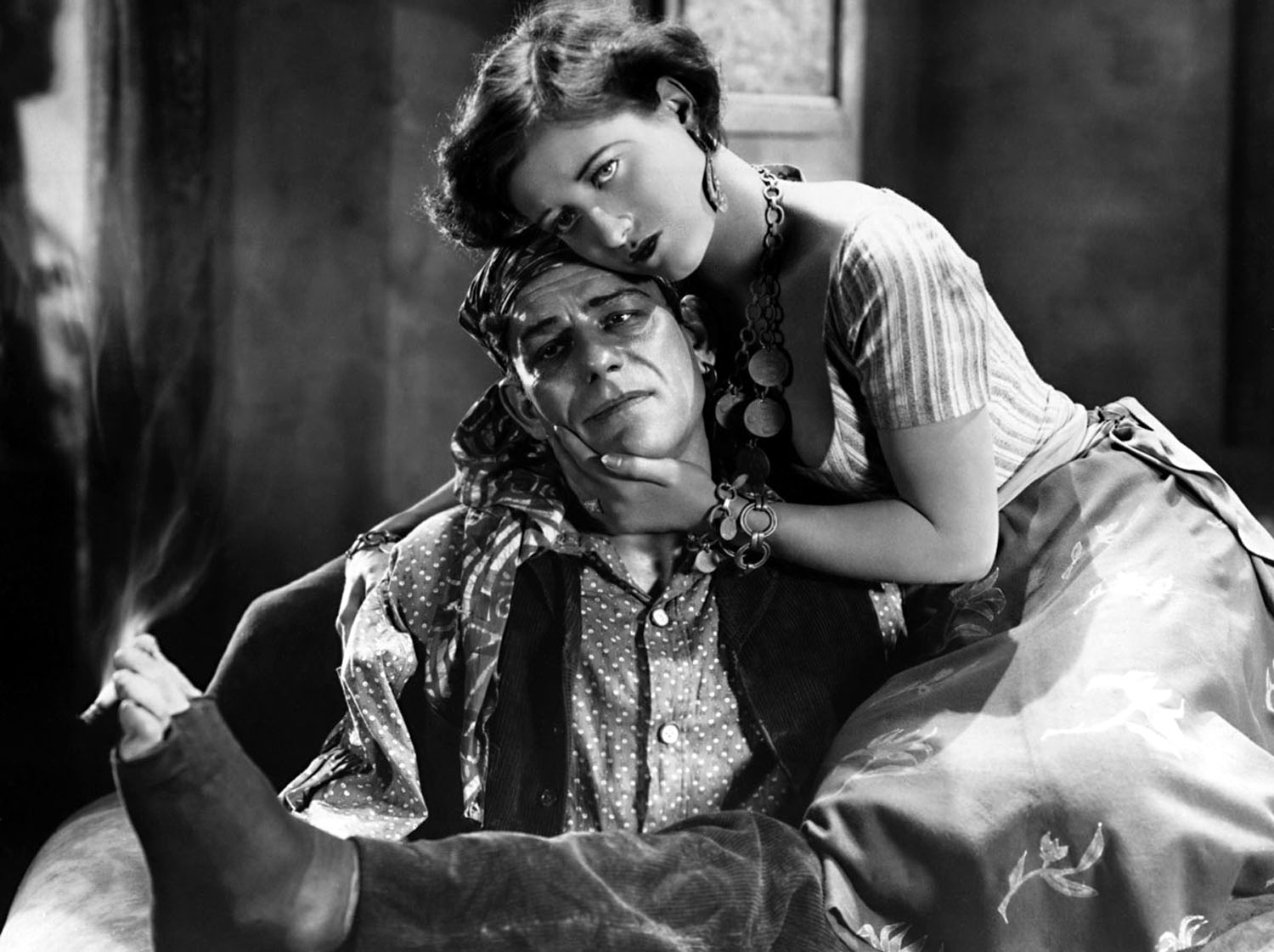
I credit Kevin Brownlow for my passion for silent movies. I studied silent cinema in college film classes in the 1980s, viewed from 16mm classroom prints. I admired the era but, apart from Chaplin and Keaton and a few choice dramas, I never really embraced it as a unique form of storytelling. Then I saw Brownlow’s 1983 documentary The Unknown Chaplin and read his invaluable book “The Parade’s Gone By.” They helped me appreciate the beauty and expressiveness of silent storytelling.
Since then I’ve seen numerous silent film that Brownlow helped restore through Photoplay Productions (which helped me really see and appreciate the films on their own terms), watched his documentaries on Buster Keaton: A Hard Act to Follow, Harold Lloyd: The Third Genius, D.W. Griffith: The Father of Film and his epic thirteen-part documentary series Hollywood: A Celebration of American Silent Film (among others), read his books on silent film history, and had the good fortune to see his restoration of Abel Gance‘s Napoleon three times (two of them thanks to the San Francisco Silent Film Festival, which brought the film to Oakland in 2012 for its only American screenings to date).
He has been honored by the New York Film Critics Circle, the Los Angeles Film Critics Association, the American Society of Cinematographers and the San Francisco Silent Film Festival, which gave him the 2010 Silent Film Festival award for his lifelong commitment to silent film preservation and history. And in 2010 he received the Academy Honorary Award, the first film preservationist to be so honored by the Academy of Motion Picture Arts and Sciences.
The 20th San Francisco Silent Film Festival closes with Brownlow’s restoration of the original Ben-Hur (1925) and he will appear onstage in conversation with 2015 Silent Film Festival award recipient Serge Bromberg. I spoke with Brownlow (who lives and works in London) about his adventures in preserving the legacy of silent cinema and the state of film restoration.
Sean Axmaker: You were involved in restoration long before the digital era.
Kevin Brownlow: Well it was certainly before the digital days but I’m certain that people were restoring films before me. I just picked titles that seemed not to be what regular cinema would call ‘commercial.’
Axmaker: You are referring to Napoleon (1927)?
Brownlow: Yes.
Axmaker: But you were also involved in many other films. When you presented silent films on British television, you produced new restorations of some of them.
Brownlow: Oh yes. Some of them were, some of them weren’t. One of the most complicated was The Four Horsemen of the Apocalypse (1921), the Valentino film which had been reissued at the time of his death. Metro then took out all the anti-German stuff because we were now supposed to be on friendly terms, never to go to war with one another again. So the film was shown in this bowdlerized version.

Axmaker: And in this case, restoration is a physical and chemical process, all about finding the best material available and then creating superior edition with the most complete and most well-preserved footage.
Brownlow: That’s right. The Museum of Modern Art were going to do [a restoration of The Four Horsemen] themselves and they had tracked down where the footage was, so that one was like picking ripe fruit off the tree. We even found some color footage, which I don’t know what it was doing in a black-and-white picture, but there was a color sequence, which I think was Prizma Color, called ‘No Man’s Land’ in the trenches. The rest of it was tinted. Although I think that the ‘original’ original prints had done what Stroheim later did in Greed when everything gold was colored gold. If you saw an apple in The Four Horsemen, you actually saw the color of it. It was surrounded by black-and-white but that thing was in color. I’m not sure that this was Ingram’s intention, there seems to be some argument there, but it was only for the very first prints.
The first restoration I did was a very strange experience. It was Sherlock Holmes, the 1922 John Barrymore picture. James Card had found it and every shot had been wound up individually and there was no pattern. He just joined them all up. He knew that I knew the director of that picture, Albert Parker, who lived in London, and I showed the jumble to Albert Parker and it looked extremely promising. It was very well photographed and some of it was shot in England and I thought, This is going to be a really marvelous picture. Then I noticed at the beginning of each shot there was a tiny little number scratched on the edge of the frameline and by following them numerically, it all fitted rather disappointingly well. It was the very opposite of what it looked like in that exciting jumble, it was just so straightforward and unadventurous. Such a shame.
Axmaker: How did it get into that strange jumble? Did you ever find out?
Brownlow: No. There was another one that was in that same situation and that was The Conquering Power (1921), the Rex Ingram film with Valentino and Alice Terry, and if you look at the print of that, it’s very, very battered and covered in dust and scratches, because that too had been broken down into single shots and stuck in a can and forgotten about. I don’t know who put it back together again but they obviously had a cutting continuity to work with, whereas there wasn’t one for Sherlock Holmes.

Axmaker: Speaking of Sherlock Holmes, the 1916 film with William Gillette is getting its American restoration premiere in San Francisco. Although it’s not the same issue, it was thought lost. It’s amazing how we are still finding not just films considered lost but significant movies that were thought lost.
Brownlow: That’s true. Think of all the archives in South America and Cuba and Eastern Europe, in Belgrade and places like that, all of those places have these archives full of silent films with altered titles and if could only find out what Belgrade calls something like James Cruze‘s Hollywood (1926), people might find it there. But we have go through them. I think film students should be banned from dealing with film theory and they should be sat down with all the magazines of the time and they should write down what the title was for each of those films we’re looking for. And they’re probably all sitting there.
Axmaker: That seems to be one of the major issues, if not the major issue, in film preservation. There isn’t the money and the manpower to go through all the material in the archives.
Brownlow: Take volunteers. I’ll give an example. In 1968 I was in Prague when the Russians were there and I was going to make a film in Prague and we were trying to find out if the studios were still operating. And meanwhile, whenever there was a gap, I would go to the archives and, I’ve forgotten the name of the wonderful of curator who ran it, but he said, ‘I want to show you my favorite American film.’ It turned out to be a picture that had originally been given a stupid title, Stark Love (1927), but it was a Robert Flaherty-type drama documentary shot in the mountains of North Carolina with the mountain people playing their part in the actual location and it was given the name in Czechoslovakia In the Glens of California.
Axmaker: It makes you wonder: how much more is out there?
Brownlow: I know. There are a lot of films locked up in archives, which in some cases I’ve seen. It just annoys me that so much is locked away. You can imagine if Hemingway or Scott Fitzgerald was forbidden to people simply because they couldn’t be bothered to spend money on making it available. It would be a scandal!
Axmaker: Today there is much more communication between archives. They are their putting information on databases to share it, and archivists meet at conferences to make connections and discuss their discoveries and their projects. That wasn’t always the case.
Brownlow: No. In particular, the Cinémathèque Française was well known for calling everything ‘inconnu,’ unknown. Which made it very difficult if they were looking for the Lon Chaney film called The Unknown (1927). [laughs] There was concern that the major studios would recall some of their best items so it was deemed politic not to talk about them too much or even show them too much.

Axmaker: That’s a very different attitude than exists today in film preservation and restoration.
Brownlow: Well I don’t know. I think you’ll find that quite a number of archives have got films that we would be surprised to know they’ve got. In some cases archives, it has to be admitted, are just warehouses. But in other cases they know what they have and they have it under wraps. I suppose that one day they’ll come to some arrangement with the copyright owner and they’ll bring it out, or they’ll wait until the copyright lapses.
Axmaker: Film history, the research into silent film production and distribution, is essential to the restoration process because of these alternate versions, because of cuts, because of incomplete prints and damaged materials. You need to know what the films looked like on their initial release if you are trying to put together a complete print from multiple sources.
Brownlow: Yes, quite right. But there is a standard look to the silent film of that period, there is a technical level, the niche below which it never dropped. They were very proficient on that side, whatever the film was like, and one can aim for that. What always worried me is the fact that timing, we call it grading over here, is a lost art. You constantly get inconsistent timing, which was something you never go in the days when it was professionally practiced. (fandor.com) Somehow we’ve got to train people in the labs to get that art back. It’s even on digital prints, they sometimes miss the consistency that is so essential.
Axmaker: For a long time frame speed was also an issue because distributors wanted to find a standard for all films when in fact there was no standard until sound film.
Brownlow: No. We discovered that, apart from Griffith, nobody seemed to crank at the speed that all the cameramen, without exception, told me that cranked at, which was sixteen frames a second. Even the first feature in Hollywood, The Squaw Man (1914) from DeMille, was shot as twenty-one frames a second. So people who are rigidly devoted to the silent era will show films only at 16 frames a second and Wings, for instance, would last nearly an hour longer than it did in 1927, which kills the pace and everything. And then you’ve got the tinting that was so popular at the time. People don’t like to use the chemicals because they are toxic so sometimes tinting is done electronically and it doesn’t look right. On Napoleon, what you saw in Oakland was tinted by the old method of dipping.

Axmaker: It glowed in the screen. I’ve seen it three times now and it is still perhaps my most treasured screening experience.
Brownlow: Have you heard the French are going to restore it now? They think they can do better than I did. And considering that they are the Cinémathèque and they have so many cans they haven’t looked in, they probably can. But it’s really rather exciting to have the film—it will take a couple of years—but to have the film about to be shown in state that they think will be much better than mine. So I can’t wait. The chap who’s going doing it, called Georges Mourier, is planning to do two versions. Not just another one, but two versions: The short version that was shown on the premier night at the Opera, which was about three and a half or four hours, and the very long one which he says he’s got the material to make six hours out of it and which was shown in two parts at the Apollo Theatre a week later.
Axmaker: I think the high quality of film restoration in the past few decades has raised the awareness of the sophistication of silent cinema. At their best look amazing, close to what they looked like for the original audiences. We can now see the sheen of glamor and filmmaking craft at its highest level. The set design comes out and the subtlety of the performances can be seen because you’re seeing a sophisticated image that I wasn’t seeing when I was first discovering silent cinema on 16mm classroom prints.
Brownlow: That’s quite true. When I started being interested in silent films people, particularly the 1940s generation, would say, ‘You must be joking! Don’t have anything to do with them, they’re so badly photographed. They’re so antique and so comic.’ I couldn’t understand this because I already had seen a number on my little projector that were abridged, admittedly, but I could see that the quality was superb and that the handing of them was so fresh. I really started a one-man crusade against this demonizing of silents as being incompetent and the technicians of the past being idiots. And it was so exciting. I remember once at the National Film Theater, I put on a really bad 16mm print of a Colleen Moore picture and ran it for a few minutes, and suddenly switched over to an original 35mm nitrate print. And the difference made the audience gasp.
Axmaker: Silent film doesn’t look primitive, certain 1920s-era silent film doesn’t look primitive, when you see what it really looked like.
Brownlow: Off the camera negative, it never did look primitive. When it gets copied and copied and copied and it has that awful whitewash look… I always thought it looked bacteria under a microscope.

Axmaker: Speaking of glamor, SFSFF is showing the Greta Garbo classic Flesh and the Devil (1926). This is my first chance to see the Hollywood glamor that made her a legend on the big screen.
Brownlow: The maddening thing is that two reels were missing and they duped them from it looks like 16mm blown up, but the rest of the film is fine. I remember showing it to William Daniels, who shot it, thinking he’d be thrilled with a print that was properly timed and off good material, but he leaned over and said, ‘Why are we watching this?’ I said, ‘I thought you’d be thrilled to see it.’ He said, ‘They don’t understand the intent.’ Which I gathered to mean that he had a special arrangement with the lab man that he always used and it would be developed to a certain degree to get a certain look and printed to get a certain look and they weren’t doing that anymore. It still looks great in the scenes that are off good material.



